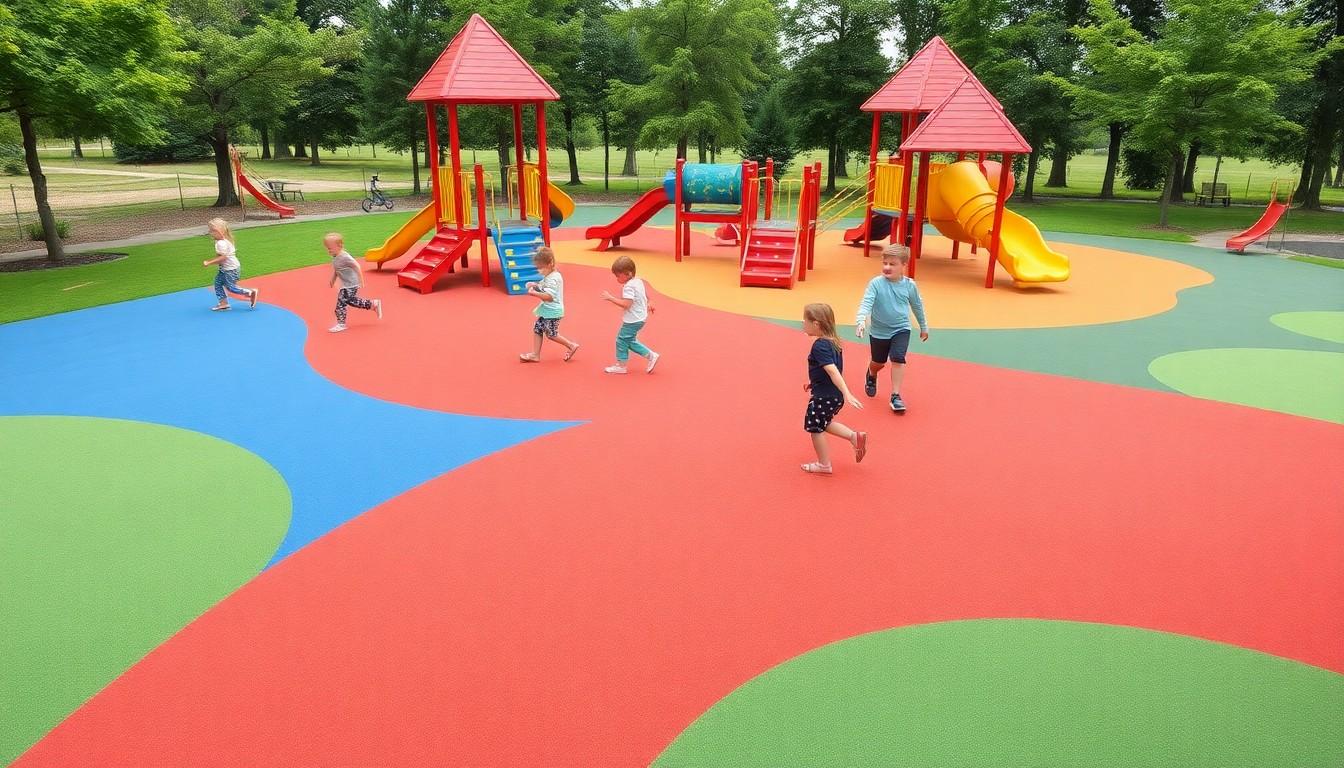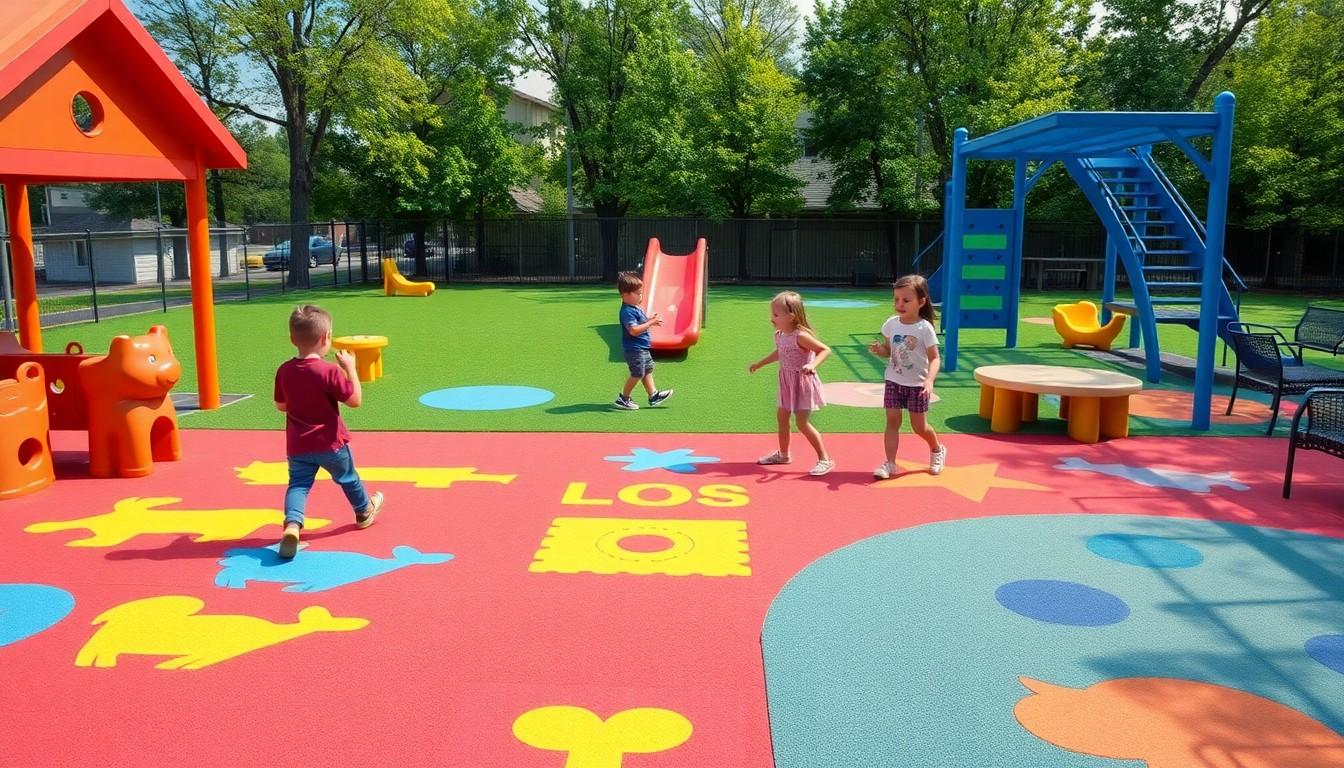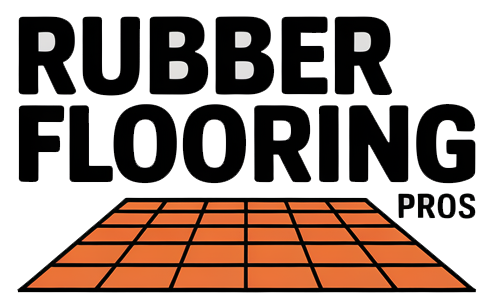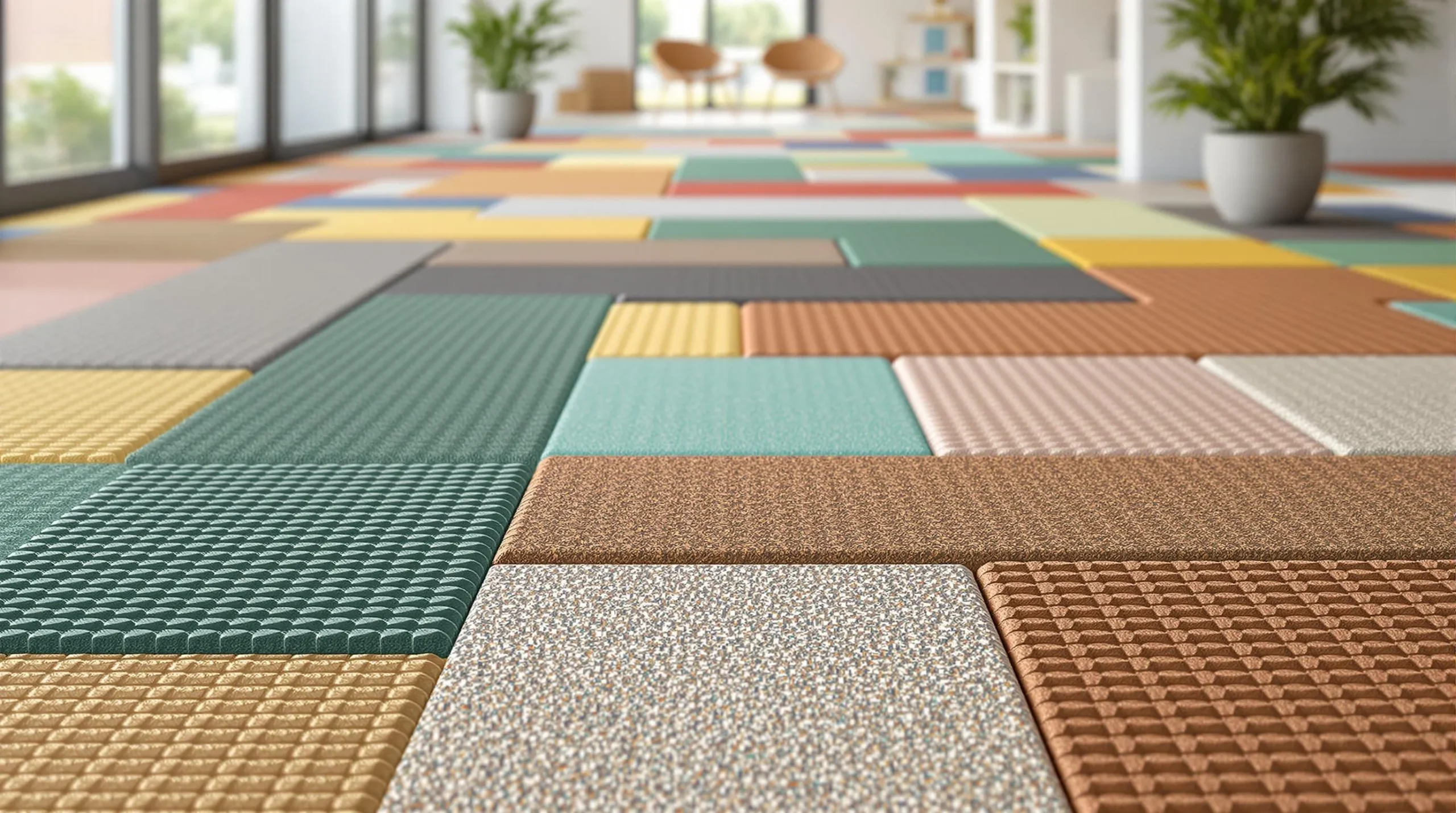Safety meets style with wet pour rubber flooring – a revolutionary surface solution that’s transforming playgrounds schools and recreational spaces across the UK. This innovative flooring system combines recycled rubber granules with polyurethane binders to create a seamless cushioned surface that’s both practical and visually appealing.
You’ll find wet pour rubber surfacing wherever safety and durability are paramount. It’s become the go-to choice for local councils businesses and homeowners who want to create impact-absorbing areas that don’t compromise on aesthetics. With its versatile nature you can customise the design in countless colours and patterns while maintaining crucial safety standards that protect children and adults alike.
Key Takeaways
- Wet pour rubber flooring consists of two layers: a base layer of coarse rubber particles and a top layer of fine EPDM granules, bound together with polyurethane
- The surface thickness varies from 40mm to 100mm based on Critical Fall Height requirements, providing up to 80% impact absorption for enhanced safety
- Installation requires specific conditions including temperatures between 5-30°C, low humidity, and proper surface preparation, with complete curing taking 24-48 hours
- This versatile flooring solution offers extensive customisation options with 15+ EPDM colours, allowing for complex patterns, educational graphics, and themed designs
- Common applications include playgrounds, sports facilities, and residential areas, with installation costs ranging from £65-120 per square metre for standard projects
- Regular maintenance through cleaning, inspection, and annual professional servicing ensures an extended lifespan of 8-15 years
What Is Wet Pour Rubber Flooring?
Wet pour rubber flooring is a seamless safety surfacing system created by mixing recycled rubber granules with a polyurethane binder. This versatile flooring creates a continuous, impact-absorbing surface that’s ideal for playgrounds, sports areas and recreational spaces.
Key Components and Materials
Wet pour rubber consists of two distinct layers:
- Base Layer: Coarse recycled rubber particles (6-10mm) mixed with polyurethane binder
- Top Layer: Fine EPDM rubber granules (1-4mm) combined with UV-stable polyurethane
- Binding Agent: Moisture-cured polyurethane that bonds rubber particles
- Primer: Specialised coating applied to substrate for enhanced adhesion
The thickness varies based on Critical Fall Height requirements:
| Fall Height | Required Thickness |
|---|---|
| 1.5m | 40mm |
| 2.1m | 50mm |
| 3.0m | 80mm |
| 3.7m | 100mm |
Installation Process
The installation follows a precise sequence:
- Ground Preparation
- Excavation of existing surface
- Installation of solid edge detail
- Compaction of sub-base material
- Application Steps
- Primer coating on prepared surface
- Base layer mixing & spreading
- Top layer application
- Surface levelling & smoothing
- Curing Requirements
- Temperature above 5°C
- Dry conditions for 24-48 hours
- No foot traffic during curing
The material sets within 12 hours in optimal weather conditions though complete curing takes 24-48 hours.
Benefits of Wet Pour Rubber Surfaces

Wet pour rubber surfaces deliver exceptional performance benefits across multiple applications, from playgrounds to sports facilities. These surfaces combine practical functionality with aesthetic appeal to create versatile spaces for various activities.
Safety Features and Impact Absorption
The safety features of wet pour rubber surfaces stem from their innovative layered construction:
- Absorbs up to 80% of impact force from falls
- Maintains consistent shock absorption across the entire surface
- Reduces risk of serious head injuries with critical fall height protection
- Prevents slip hazards with textured, non-slip surface grip
- Eliminates trip risks through seamless installation
- Drains water effectively to minimise puddle formation
| Critical Fall Height (m) | Required Thickness (mm) | Impact Absorption Rate (%) |
|---|---|---|
| 1.5 | 40 | 65 |
| 2.1 | 60 | 70 |
| 3.0 | 80 | 75 |
| 3.7 | 100 | 80 |
Customisation Options and Design Flexibility
Wet pour rubber surfaces offer extensive customisation possibilities:
- Creates complex patterns using multiple EPDM colour combinations
- Incorporates educational graphics like numbers letters maps
- Designs themed play areas with animal shapes geometric patterns
- Matches existing colour schemes in surrounding spaces
- Forms distinct activity zones through colour coding
- Adapts to irregular shapes curves corners
- Integrates custom logos branding elements
- Allows for future design modifications without surface replacement
- 15+ standard EPDM colour options
- 3D textured surface variations
- Precise colour matching capabilities
- Seamless pattern transitions
- Multiple thickness configurations
Common Applications

Wet pour rubber flooring adapts to diverse environments through its versatile design options and safety features. Each application area showcases specific benefits tailored to its unique requirements.
Playground Surfaces
Playground installations represent the primary application for wet pour rubber surfaces, offering critical fall protection for play equipment. The surfacing accommodates varying critical fall heights from 1.5m to 3.7m through adjustable thickness layers. Popular playground features include:
- Integrated play designs with numbered hopscotch grids
- Animal shapes in vibrant EPDM colours
- Educational elements like alphabet circles
- Zoned areas distinguishing age-appropriate equipment
- Adventure trails with directional markings
Sports Facilities
Sports venues utilise wet pour rubber surfaces to enhance athlete performance and reduce injury risks. The material’s shock-absorbing properties create optimal conditions for:
- Multi-use games areas with court markings
- Running tracks with lane demarcations
- Indoor sports halls with specialised grip patterns
- Exercise zones in fitness centres
- Athletic training facilities with distance markers
Residential Uses
Private property applications demonstrate the adaptability of wet pour rubber surfaces in domestic settings. Common residential installations include:
- Garden pathways with decorative borders
- Pool surrounds with non-slip textures
- Children’s play areas with themed designs
- Patio spaces with coordinated colour schemes
- Driveway entrance features with house numbers
Each installation maintains consistent safety standards while incorporating specific design elements suited to its purpose.
Installation and Maintenance
Professional installation of wet pour rubber flooring requires meticulous attention to detail and specific environmental conditions. The success of the installation depends on proper surface preparation and regular maintenance protocols.
Surface Preparation Requirements
The base surface requires specific conditions for optimal wet pour rubber installation:
- Clear the area of debris, vegetation or existing damaged surfacing
- Level concrete or tarmac base with less than 2mm variance across 3m
- Test substrate moisture content (maximum 5% for concrete surfaces)
- Apply primer coating at 0.3kg/m² coverage rate
- Install edge details using aluminium or rubber containment
- Ensure proper drainage with 1:100 minimum fall gradient
Temperature and weather conditions affect installation:
| Condition | Requirement |
|---|---|
| Air Temperature | 5-30°C |
| Ground Temperature | 5-25°C |
| Humidity | Below 80% |
| Rainfall | No rain for 12 hours |
| UV Exposure | No direct sunlight for 4 hours |
Cleaning and Repair Guidelines
Regular maintenance preserves the appearance and safety features:
Daily/Weekly Tasks:
- Remove loose debris with leaf blower or soft brush
- Clean spills immediately using mild soap solution
- Inspect for damage or loose granules
- Clear drainage channels of blockages
Annual Maintenance:
- Conduct pressure washing at 2000 PSI maximum
- Apply antimicrobial treatment to prevent moss growth
- Test impact absorption levels
- Inspect seams and repair minor damages
- Patch repairs for areas under 1m²
- Seam repairs using colour-matched EPDM granules
- UV protection renewal every 3-5 years
- Surface rejuvenation through specialist cleaning
Cost Considerations
Wet pour rubber flooring represents a significant investment that varies based on project specifications size location. Understanding the cost components helps in planning budgets effectively for installation projects.
Initial Investment vs Long-Term Value
The initial cost of wet pour rubber flooring ranges from £65 to £120 per square metre for standard installations. This investment includes:
- Material costs for both base layer rubber crumb
- EPDM rubber granules for the wearing course
- Polyurethane binder system components
- Professional installation labour charges
Long-term value benefits offset the upfront costs through:
- Reduced maintenance requirements compared to traditional surfaces
- 8-15 year lifespan with proper care
- Lower replacement frequency than alternative surfacing
- Enhanced property value for commercial residential spaces
Factors Affecting Price
Multiple variables influence the final cost of wet pour rubber installations:
| Factor | Impact on Cost |
|---|---|
| Surface Area | £65-120/m² (basic installation) |
| Critical Fall Height | +£10-25/m² per additional 10mm thickness |
| Design Complexity | +15-30% for intricate patterns |
| Site Accessibility | +5-15% for difficult access |
| Ground Preparation | £15-30/m² for substrate work |
Key pricing determinants include:
- Surface thickness requirements based on fall height regulations
- Colour selections EPDM granule combinations
- Pattern complexity graphics incorporation
- Site preparation requirements drainage solutions
- Geographic location transport costs
- Installation timing seasonal considerations
- Existing surface removal disposal needs
The final project cost reflects a combination of these elements determined during the initial site survey consultation process.
Conclusion
Wet pour rubber flooring stands out as a remarkable surfacing solution that combines safety durability and aesthetic appeal. You’ll find it’s an investment that delivers exceptional value through its versatile applications and long-lasting performance.
Whether you’re planning a playground renovation upgrading sports facilities or enhancing your home’s outdoor spaces wet pour rubber surfacing offers the perfect blend of practicality and design flexibility. Its safety features customisation options and low maintenance requirements make it an ideal choice for any project.
By choosing wet pour rubber flooring you’re not just selecting a surface – you’re investing in a solution that’ll serve your needs for years to come while providing a safe and attractive environment for all users.
Frequently Asked Questions
What is wet pour rubber flooring?
Wet pour rubber flooring is a seamless safety surfacing system made from recycled rubber granules and polyurethane binders. It consists of two layers: a base layer of coarse rubber particles and a top layer of fine EPDM rubber granules. This flooring is commonly used in playgrounds, sports areas, and recreational spaces.
How long does wet pour rubber flooring take to cure?
The initial setting time is approximately 12 hours under optimal conditions. However, complete curing takes 24-48 hours before the surface can be used safely. Weather conditions and temperature can affect curing times.
What are the safety features of wet pour rubber flooring?
The flooring can absorb up to 80% of impact force from falls, provides consistent shock absorption, and features a non-slip textured surface. It’s designed to meet Critical Fall Height requirements and includes effective drainage to prevent water pooling.
How much does wet pour rubber flooring cost?
Standard installations typically cost between £65 and £120 per square metre. The final price depends on factors such as surface area, fall height requirements, design complexity, site accessibility, and ground preparation needs.
How long does wet pour rubber flooring last?
With proper maintenance, wet pour rubber flooring typically lasts between 8-15 years. Regular maintenance, including debris removal, spill cleaning, and annual inspections, helps maximise its lifespan.
Can wet pour rubber flooring be customised?
Yes, the flooring offers extensive customisation options with over 15 standard EPDM colours. It can incorporate complex patterns, educational graphics, themed play areas, and colour-coded zones. Designs can be tailored to match existing colour schemes and branding.
Is wet pour rubber flooring suitable for outdoor use?
Yes, it’s specifically designed for outdoor use. The material is UV-stable, weather-resistant, and includes effective drainage systems. It’s suitable for various outdoor applications including playgrounds, sports areas, and residential gardens.
What maintenance does wet pour rubber flooring require?
Regular maintenance includes removing debris, cleaning spills promptly, and conducting annual inspections. Patch repairs may be needed for damaged areas, and UV protection should be renewed periodically to maintain the surface quality.

